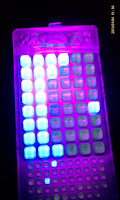This year there have been five health advisories issued due to high levels of fecal bacteria during routine testing. There have also been 11 closures to water contact at beaches affected by sewage spills. That is more than we have seen in the past few years at this point in the summer beach season.
How Washington beaches stack up
We collect data throughout the year and issue an annual health report for beaches.Ninety-five percent of beaches monitored received a passing grade in 2018, revealing that Washington's saltwater beaches are safe for swimming and recreational activities.
We have been monitoring water quality at beaches for 15 years. The number of monitored beaches that had less than two swimming closures or advisories improved by 19 percent over the last three years.
Communities continue to replace old, failing septic systems and repair or improve infrastructure. Those efforts have a positive effect on water quality and can reduce high levels of bacteria in the water.
In 2018, Bay View State Park, Kayak Point County Park, and Sooes Beach had more than one sampling event in the advisory or closure range. For that reason, these three beaches were considered not passing beaches.
BEACH partners work together to monitor water quality
The water samples are tested for bacterial contamination. This information helps health officials issue swimming advisories to keep the public safe!
Water is tested for fecal bacteria
Local health departments, counties, tribes and volunteers collect water quality samples weekly or bi-weekly. The samples go to state accredited labs to be tested for enterococcus, a type of fecal bacteria.
The fecal indicator enterococci is used, because this indicator better correlates with swimming-related illness than other fecal indicators, like fecal coliform or E.coli.
The fecal indicator enterococci is used, because this indicator better correlates with swimming-related illness than other fecal indicators, like fecal coliform or E.coli.
Issuing no-contact advisories
 |
| Water samples in a Quanti-Tray. |
When fecal bacteria levels exceed the EPA and grant performance criteria, we work with local health departments to issue a health advisory at the beach. Follow-up water samples are taken and if bacterial levels had dropped into the safe swimming range the advisory is lifted.
Ecology and EPA 2018 beach reports
Our 2018 health report shows how beaches performed. You'll find the top swimming beaches for water quality by county and beaches that did not meet swimming standards last year. You can read our 2018 beach water quality summary online.
EPA also prepares a national summary of beach closings and advisories that states, territories, and tribes issued during the 2018 swimming season as well as data trends from 2013 to 2018.
According to EPA's report, the nation’s monitored coastal and Great Lakes beaches were open and safe for swimming 95 percent of the time during the 2018 swimming season, similar to previous years. You can read EPA’s BEACH Report: 2018 Swimming Season online.
EPA also prepares a national summary of beach closings and advisories that states, territories, and tribes issued during the 2018 swimming season as well as data trends from 2013 to 2018.
 |
| Storm drains at shorelines can be a source of bacteria. |
Sewage spills and combined sewer overflows
When counties notify the Washington BEACH Program team of a sewage spill, we work with the county to preemptively issue a closure to water contact at affected beaches because we know that sewage is in the water. Depending on the volume of the spill, these closures will usually stay in place from 3 – 7 days.
Stay updated about water quality at your beaches by keeping up with us on our blog Fecal Matters, on Facebook, or join our listserv.
By Julianne Ruffner, BEACH program manager
Media contact: Camille St. Onge, 360-584-6501 or camille.st.onge@ecy.wa.gov
Contact Julianne at 360-407-6154 or julianne.ruffner@ecy.wa.gov for questions.



No comments:
Post a Comment